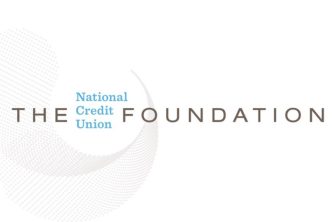On Thursday, May 2, 2019 the CFPB announced a proposed modification of the HMDA reporting rules for small asset sized credit unions that asking for comment in a brief 30-day period. This is important to all credit unions regardless of size as it represents an important step toward regulatory relief that deserves support.
The proposed rule change would for institutions with a home office or branch in an MSA with assets in excess of $46 million as of Dec. 31, 2018:
- Increase the threshold for reporting data about closed-end mortgage loans so that institutions originating fewer than either 50 consumer purpose closed-end mortgage loans, or alternatively 100 consumer purpose closed-end mortgage loans, in either of the two preceding calendar years would not have to report such data as of January 1, 2020.
- Extend the current temporary reporting exemption for dwelling secured, consumer purpose open-end lines of credit, now set at 500 in each of the two preceding years, for two more years – 2020 and 2021 (Dec. 31, 2021)
- Setting the permanent exemption from reporting for dwelling secured, consumer purpose open-end lines of credit beginning Jan. 1, 2022 at 200 for each of the two preceding calendar years.
- Make final partial exemptions and clarify the reporting required under 2018 amendments adopted under the Economic Growth, Regulatory Relief, and Consumer Protection Act EGRRCPA) which provide covered credit unions the option of reporting exempt data fields as long as they report all data fields within any exempt data point for which they report data; clarify that only loans and lines of credit that are otherwise HMDA reportable count toward the thresholds for the partial exemptions; clarify which of the data points in Regulation C are covered by the partial exemptions; designate a non-universal loan identifier for partially exempt transactions for institutions that choose not to report a universal loan identifier; and clarify the exception to the partial exemptions for insured depository institutions with less than satisfactory examination histories under the Community Reinvestment Act of 1977 (CRA).
- Make final the partial amendments above implementing the EGRRCPA effective on January 1, 2020.
What This Means to Credit Unions: The detailed collection of loan applicant and property related data was designed to prevent redlining. Now, the amount of data being collected is: (1) extensive and often includes information not used in underwriting; (2) an enormous burden, that for most credit unions can only be accomplished by third-party vendor provided computer programs.
Suggested Comment Points:
- Support for the overall purpose of HMDA reporting – prevention of redlining.
- Credit unions lend to member-owners and particularly where the Field of Membership is occupationally-based, do not and cannot redline because their members are usually disbursed throughout the community.
- Raising the threshold for closed and open-end consumer purpose home mortgage loans lift the burden for a number of credit unions that are currently at or slightly over the trigger points and where there is no evidence of any direct or disparate impact on home financing by those credit unions.
- Allow all reporting credit unions to more closely tailor their HMDA reports to data that they actually use in underwriting.
This is a critical move in restoring the balance between legitimate consumer protection and the regulatory burden imposed by detailed, complex rules that require enormous compliance effort and expenditure.
To address comments to the CFPB, email 2019-NPRM-HMDAThresholds@cfpb.gov or send via post to Comment Intake, Bureau of Consumer Financial Protection, 1700 G Street NW, Washington, DC 20552. Reference Docket No. CFPB–2019-0021 or RIN 3170-AA76





